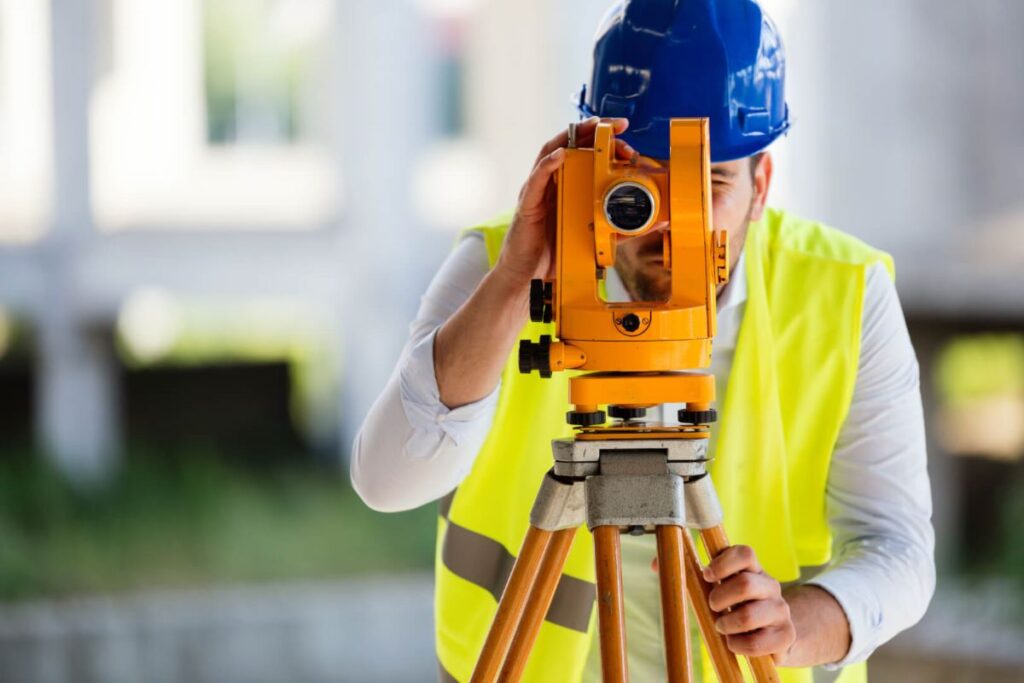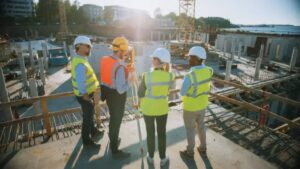Professional survey companies are essential partners in successful land development projects. These specialised firms provide critical data and insights that form the basis of construction, infrastructure, and property development initiatives.
A wide range of survey services includes:
- Land Title Surveys – Precise boundary determinations and property documentation
- Topographical Mapping – Detailed terrain analysis and site characteristics
- Utility Location – Advanced subsurface infrastructure detection
- 3D Scanning – High-precision spatial data capture
- Engineering Support – Technical expertise throughout project lifecycles
Modern survey company combine advanced technology with traditional surveying methods to serve various sectors, including:
- Residential developments
- Commercial properties
- Government infrastructure
- Telecommunications projects
- Educational facilities
The accuracy and reliability of survey data directly affect project success, cost management, and legal compliance. Professional survey services provide the necessary foundation for informed decision-making and efficient project execution in the property and construction industries.
1. ALTA/ACSM Land Title Surveys
ALTA/ACSM Land Title Surveys are the highest standard in property boundary surveys, created through collaboration between the American Land Title Association and the American Congress on Surveying and Mapping. These thorough surveys are crucial for real estate transactions, development projects, and legal documentation.
Key Components of ALTA/ACSM Surveys:
- Determining property boundaries
- Identifying existing improvements
- Documenting easements and encroachments
- Verifying access rights
- Recording zoning classification
- Detecting visible utilities
Survey companies use advanced technology and methods to carry out these detailed examinations. The process includes:
- Research PhaseAnalyzing historical records
- Reviewing existing property documentation
- Examining title commitments
- Field WorkPhysically measuring boundaries
- Documenting structures
- Identifying potential encroachments
- Data ProcessingCreating detailed survey drawings
- Integrating with existing property records
- Generating comprehensive reports
These surveys are vital for protecting property owners, lenders, and title companies by uncovering potential issues before property transactions occur. The resulting documentation adheres to strict national standards, ensuring consistency and reliability across various jurisdictions and project types.
2. Topography Surveys
Topography surveys are important tools used to capture and document the physical features of land surfaces. These surveys provide detailed representations of both natural and man-made elements, such as:
- Ground elevations and contours
- Buildings and structures
- Trees and vegetation
- Water bodies and drainage patterns
- Roads and pathways
- Utilities visible at surface level
Methods Used in Topography Surveys
Professional survey companies use advanced techniques to create accurate topographic maps. The main methods employed are:
1. Traditional Field Surveys
This method involves on-site measurements using equipment like total stations and GPS devices. Surveyors directly measure elevation points and make physical observations of the site.
2. Modern Technology Integration
In addition to traditional methods, survey companies also incorporate modern technology into their surveys. This includes using drones for aerial mapping, real-time kinematic (RTK) GPS systems for precise positioning, and digital terrain modelling software for creating 3D representations of the landscape.
Applications of Topography Surveys
The resulting topographic maps are valuable resources for various purposes, including:
- Site analysis and feasibility studies
- Construction planning and earthwork calculations
- Drainage design and flood assessment
- Infrastructure development projects
- Environmental impact evaluations
Deliverables from Topography Surveys
Survey companies provide these maps in different formats to suit client needs. Common deliverables include 2D CAD drawings showing the layout of the site and digital elevation models (DEMs) representing changes in height across the area.
The level of detail in these deliverables can be customised based on project requirements. For example, some projects may only require basic site layouts while others may need intricate representations of complex terrain features.
Ensuring Accuracy in Topography Surveys
To ensure the accuracy of topographic data, professional surveyors implement strict quality control measures throughout the surveying process. They also adhere to industry standards set by professional organisations.
This commitment to precision allows architects, engineers, and developers to rely on the information provided by these surveys when making decisions during different stages of their projects.
3. Subsurface Utility Locating
Subsurface utility locating is an essential safety measure in construction and development projects. By identifying and mapping underground infrastructure, it helps prevent expensive damages, project delays, and potential dangers to workers and the public.
How are buried utilities identified?
Professional survey companies use advanced detection methods to find buried utilities:
- Electromagnetic Detection: Specialised equipment traces metallic utilities and cables
- Ground Penetrating Radar (GPR): High-frequency radio waves create detailed images of non-metallic pipes and structures
- Radio Detection: Precise tracking of utility lines through radio frequency signals
- Vacuum Excavation: Non-destructive method to visually confirm utility locations
What does the mapping process involve?
The mapping process includes the following steps:
- Initial site assessment
- Utility detection using multiple technologies
- Data collection and documentation
- Creation of detailed utility maps
- Integration with existing site plans
What information do survey companies provide?
Survey companies offer comprehensive utility maps that indicate:
- Depth and location of utilities
- Type and size of infrastructure
- Potential conflict points
- Safe dig zones
- High-risk areas
This detailed documentation allows project teams to plan excavation works safely, modify designs to accommodate existing infrastructure, and maintain essential services during construction activities. The data gathered from subsurface utility locating is extremely valuable for future maintenance and development projects.

4. Laser Scanning Technology in Modern Land Surveying
Laser scanning technology has transformed the land surveying industry by allowing us to capture precise spatial data quickly and accurately. Today’s laser scanners can send out millions of laser beams every second, creating detailed three-dimensional representations of our surroundings.
Key Technological Advancements:
- High-speed data collection capabilities reaching up to 2 million points per second
- Enhanced accuracy levels within millimetres
- Integrated GPS systems for georeferencing
- Advanced filtering algorithms for noise reduction
- Real-time data processing capabilities
The use of laser scanning technology in surveying projects brings significant advantages:
- Time EfficiencyRapid data collection reduces field time by up to 80%
- Automated processing streamlines workflow
- Multiple site visits become unnecessary
- Data QualityComprehensive coverage of complex structures
- Elimination of human measurement errors
- Consistent accuracy across large areas
- Safety EnhancementRemote measurement of hazardous areas
- Reduced need for physical access to dangerous zones
- Minimal disruption to ongoing site operations
By combining laser scanning technology with modern surveying techniques, we can create highly detailed digital models of physical spaces. These digital twins are valuable tools for project planning, design changes, and future reference, revolutionising how we carry out and oversee land development projects.
5. 3D Mapping for Enhanced Visualisation and Analysis
3D mapping technology transforms raw survey data into detailed, interactive visual representations of surveyed sites. These sophisticated models serve as powerful tools for project planning and stakeholder communication.
Key Features of 3D Mapping:
- Realistic Terrain Modelling: Accurate representation of land contours, elevations, and surface features
- Structural Integration: Incorporation of existing buildings, infrastructure, and vegetation
- Layer Management: Ability to toggle between different data sets and view specific site elements
- Dynamic Perspectives: Multiple viewing angles and zoom capabilities for detailed inspection
Survey companies leverage these 3D models to create immersive visualisations that aid decision-making processes. Project stakeholders can examine site characteristics, identify potential challenges, and evaluate design alternatives through detailed digital representations.
The practical applications of 3D mapping extend to:
- Site analysis and feasibility studies
- Construction planning and sequencing
- Environmental impact assessments
- Resource allocation and logistics planning
- Stakeholder presentations and approvals
Modern 3D mapping solutions enable real-time collaboration between project teams. Architects can assess design compatibility with existing site conditions, engineers can evaluate structural requirements, and contractors can plan construction sequences – all through a shared digital platform.
These detailed visualisations reduce misunderstandings and streamline communication between different project disciplines, leading to more efficient project delivery and reduced risk of costly modifications during construction phases.
See Also : Survey Engineers: Innovations in Engineering Surveying Techniques
6. Scan to BIM Workflows for Efficient Design Coordination
Scan to BIM workflows represent a significant advancement in modern surveying and construction practices. This innovative process transforms precise laser scan data into detailed Building Information Modelling (BIM) components, creating accurate digital representations of physical spaces.
The Workflow Stages
The workflow consists of several key stages:
- Data Acquisition
- High-resolution laser scanning of existing structures
- Collection of point cloud data with millimetre accuracy
- Photographic documentation for texture mapping
- Data Processing
- Point cloud registration and cleaning
- Noise reduction and data optimisation
- Creation of unified coordinate systems
- BIM Model Development
- Conversion of point clouds into parametric BIM objects
- Integration of material properties and specifications
- Implementation of industry-standard classification systems
Benefits of Scan to BIM Workflows
The integration of scan data into BIM platforms enables real-time collaboration among project stakeholders. Architects can access accurate as-built conditions, engineers can perform clash detection analyses, and contractors can plan construction sequences with precision.
This technological integration delivers substantial benefits:
- Reduced rework and construction errors
- Enhanced accuracy in renovation projects
- Improved coordination between design teams
- Streamlined documentation processes
- Cost-effective project delivery
Survey companies utilise these advanced workflows to provide clients with comprehensive digital assets that serve as the foundation for informed decision-making throughout the project lifecycle.
7. Civil Engineering Support throughout the Project Lifecycle
Survey companies play a vital role in providing comprehensive civil engineering support across multiple project phases. Their expertise extends beyond traditional surveying services to encompass critical engineering aspects that ensure successful project delivery.
Key Support Services During Project Phases:
- Pre-Construction Phase
- Site analysis and feasibility studies
- Infrastructure assessment
- Earthwork calculations
- Drainage design support
- Construction Phase
- Set-out surveys for construction works
- Quality control monitoring
- As-built documentation
- Construction progress tracking
- Post-Construction Phase
- Infrastructure monitoring
- Asset management support
- Maintenance planning assistance
- Compliance verification
The integration of civil engineering expertise with surveying capabilities enables effective infrastructure management through:
- Precise volume calculations for earthwork operations
- Detailed grading plans for site development
- Accurate positioning of utilities and services
- Real-time monitoring of structural movements
- Comprehensive documentation for regulatory compliance, as outlined in the engineering design construction manual
Professional survey companies maintain dedicated teams of qualified engineers and surveyors who collaborate to deliver tailored solutions for each project stage. This integrated approach ensures optimal project outcomes while maintaining strict quality standards and regulatory requirements throughout the development lifecycle.

8. Diverse Client Base: Serving Residential, Governmental, and Commercial Sectors
Survey companies maintain robust service delivery through a diverse portfolio of clients across multiple sectors. This multi-sector approach creates stability and drives innovation in service offerings.
Residential Sector
- Private homeowners seeking boundary surveys
- Property developers requiring subdivision plans
- Real estate agencies needing accurate property measurements
- Homeowners associations requesting topographic surveys
Government Projects
- School Infrastructure NSW (SINSW) developments
- Local council infrastructure projects
- City planning and development initiatives
- Public works and utilities management
Commercial and Industrial Clients
- Telecommunications companies (NBN, Telstra)
- Construction firms
- Shopping centre developments
- Industrial park projects
The ability to serve different market segments allows survey companies to:
- Build Resilience: Market fluctuations in one sector can be offset by stability in others
- Share Innovation: Solutions developed for one sector often benefit clients in other areas
- Maintain Flexibility: Diverse expertise enables quick adaptation to changing market demands
- Develop Expertise: Each sector brings unique challenges that enhance professional capabilities
This multi-sector approach has proven particularly valuable in NSW and QLD markets, where survey companies can leverage their expertise across different project types while maintaining high service standards and competitive pricing structures.
9. Cost Factors Considered in Land Surveying Services Pricing
The pricing structure of land surveying services reflects multiple variables that impact project complexity and resource requirements. Understanding these cost determinants helps clients budget effectively for their surveying needs.
Key Price-Influencing Factors:
- Property Characteristics: Size and acreage of the land, terrain complexity and accessibility, presence of natural obstacles or vegetation
- Project Specifications: Required accuracy levels, type of survey needed, data format requirements, turnaround time expectations
- Location Considerations: Distance from surveyor’s base, urban vs rural settings, site access restrictions, local regulatory requirements
- Equipment Requirements: Need for specialised technology, duration of equipment deployment, number of survey crew members
Survey companies like Wumara Group offer competitive pricing structures with negotiable rates, tailoring their services to match specific project requirements while maintaining high-quality standards. This flexible approach enables clients from various sectors to access professional surveying services within their budgetary constraints.
10. Ensuring Legal Compliance for Successful Project Delivery
Legal compliance is a fundamental aspect of professional land surveying practices. Survey companies must follow strict rules and guidelines set by state and federal authorities to maintain the quality of their services.
Key Legal Requirements:
- Adherence to state-specific surveying regulations
- Compliance with local planning and development codes
- Maintenance of proper licensing and certifications
- Documentation of survey methodologies and findings
Accurate data delivery is crucial in preventing legal disputes. Professional survey companies implement rigorous quality control measures to ensure precise boundary determinations and property measurements. This attention to detail helps:
- Reduce boundary disputes between neighbouring properties
- Prevent costly litigation and project delays
- Protect client interests during property transactions
- Support legal documentation requirements
Survey companies that prioritise regulatory compliance and accurate data delivery create a solid foundation for successful project outcomes. This commitment to excellence safeguards both the surveyor’s professional reputation and the client’s investment throughout the project lifecycle.

